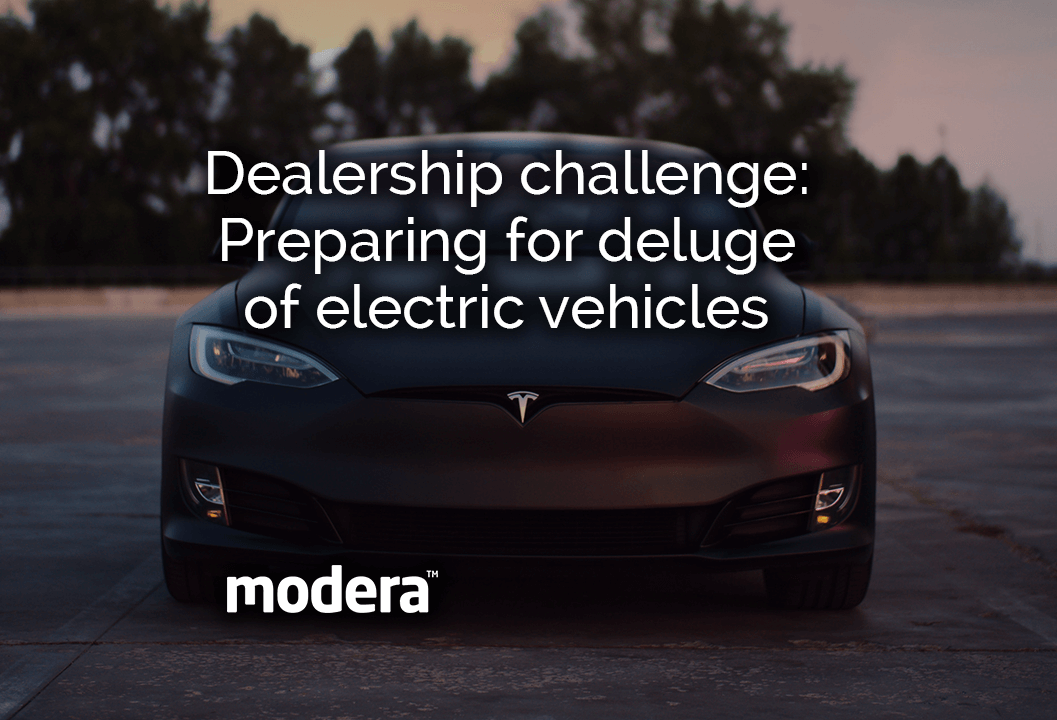
The impact due to the Covid-19 pandemic has had a lasting impact among the automotive industry. Even though the economy is slowly bouncing back, dealerships across the nation have been affected by this pandemic in many different ways. In fact, dealership owners and managers had to devise new strategies to attract customers, or they wouldn’t survive. While COVID-19 has played a role in the way consumers make purchasing decisions, the trajectory for the dealership industry has not been significantly altered. The business was already at a crossroads and social distancing has only sped up changes that were already underway.
So what are the challenges in 2022? Let us find out:
Challenge 1: Chip shortage
It has been nearly two years into the global chip shortage, but return to normalcy for manufacturer’s supply chains are projected no earlier than 2023. It means dealerships will have to undergo tough times for 7 more months at least.
According to NADA, new light-vehicle sales have fallen nearly 13% year-on-year. The shortage has lasted far longer than industry experts had predicted. While the vehicle demand has increased in recent months, the capacity to produce semiconductor microchips has not been able to meet demand. Dealerships are now finding it extremely difficult to find vehicles on the lot, let alone have sufficient inventory for customers. Dealership owners need to adjust their strategies for this challenge by focusing heavily on marketing and sales tactics that generate leads rather than closing deals with prospective buyers.
Depending upon the strategies of the manufacturer, the supply chain issue has played out either by reduced manufacturing, fewer vehicle-options available or stockpiling of semi-built vehicles with plans to retrofit the shells later. However, managing the chasm between customer requirements and available options falls squarely on dealerships.
For example, say some dealerships have informed customers in 2021 that heated seats are temporarily unavailable. Dealers previously needed to know the originally planned compensation – somewhere between $150 and $500 depending upon the market – for such a letdown. And when the popular feature is soon to be reactivated sometime in 2022, dealers have to know how many retrofits will be available, along with the time frame. Managing expectations and delivery so customers might navigate either the need or want of a new vehicle with or without that feature shall be a tightrope walk requiring detailed communication.
Solution for chip shortage
This is a perfect opportunity for dealerships to figure out how to best leverage digital channels over traditional ones to boost revenue despite the low supply of cars available at the dealership. Dealerships whose inventory mostly features new cars have to remain competitively priced. They also have to continue offering incentives in the form of extended warranties and low financing rates. In fact, they should consider implementing price-matching strategies for new vehicles so they can still compete in the market.
When faced with increased competition from other car lots, it is not just about price matching your competitors. Exclusive perks have to be offered, such as free pick-up service for those purchasing online. Thus, customers have peace of mind knowing their vehicle has been safely delivered at no extra cost before purchase completion.
When you provide unique services such as buying customers’ cars or free pick-up service, it gives you an edge over the competition. You provide a more convenient experience for buyers, while encouraging them to come back to your dealership. It is time for dealerships to invest their resources into developing new strategies that set the customer’s mind at ease before purchasing from another dealership.
Communication challenges change over time. There might be a scenario where sufficient chips aren’t available, so allocation decisions have to be made, with not necessarily interchangeable parts. The unmet need right now is unprecedented.
Challenge 2: Preparing for deluge of electric vehicles
Electric vehicles or EVs have been a hot topic for quite some time now. It is no secret that the world is preparing for a considerable ramp-up in EVs. Governments globally have mandated either better fuel efficiency or zero emissions, while legislation and budgets are preparing the public spaces for charging stations or wireless charging.

Solution for electric vehicles deluge
The dealerships have to prepare equally well for what is about to come. The changes in process are indeed staggering. Dealers will definitely have time to adjust for the huge change in technique and sales skills, but there is a massive infrastructure change going on right now. Be it forklifts to move batteries, new tools to service vehicles, or buildings to safely store the batteries including underground chemical captures in case of fires or leakage. There is this continuous, rolling release of EVs into the prime segments in this industry in big volumes.
Challenge 3: Demand for online sales goes up
With the gradual shift towards online shopping, conventional dealership models are being challenged due to rise of decentralized marketplaces. Dealerships have to find techniques to adapt their showroom spaces and sales methods to meet this demand. It is a must, for more suitable purchasing experiences that can help avoid losing out on crucial revenue streams.
Recent study fund that 64% of shoppers wish to opt for more of the online purchase process, the next time they buy a vehicle. This shows that dealerships need to capitalize on this trend by providing their customers with online sales portals. Dealers have to create apps for mobile devices too. Consumers should be able to buy vehicles and schedule test drives directly from the app, without ever stepping foot in a dealership showroom or meeting with a salesperson.
Solution: How to meet the demand for online sales in dealership?
While online sales will add barriers to purchase for many dealerships, there are some great ways to overcome this challenge. For instance, creating an omnichannel sales presence is a must these days. It effectively combines all of the dealership’s sales channels, to provide a cohesive and user-friendly experience. Dealerships are increasingly tailoring their digital experiences for customers on different devices and making online services available through smartphones, tablets, laptops, and desktop computers.
They have to offer a lucrative combination of traditional face-to-face interactions with staff members and personalized customer service over phone calls or emails. As a dealership owner, you have to ensure that modern digital options are available. Interactive websites displaying vehicle inventory, alongside pricing details and extensive information about each model line, are very important. This is all the more crucial because most car buyers start looking for cars online before entering showrooms or at some point of the purchase process. The more seamlessly you can combine these avenues into one single, streamlined platform, the more likely customers will remain loyal to a single dealership.

Did you know that companies like Mini Cooper have now created augmented reality experiences that can be downloaded to a phone for customers? People can check out all vehicles in the privacy of their home or while at work. They can even walk around them from different angles in the app. Installing an augmented reality showroom for the dealership is very smart idea!
Digital sales channels aren’t the only option available to dealerships. They have to invest in developing online sales call services that potential buyers can initiate over a video consultation with a staff member. This way, your sales staff can answer questions without the customer having to drive to the dealership. Using this approach, even those unable to make it into showrooms will still have the opportunity of being exposed to dealer-provided information about inventory and pricing options.
Challenge 4: Competition to capture customer attention
Industry giants like Carvana, Vroom, and Carmax, are offering low-cost strategies, along with ease of access. Thus, dealerships find themselves with a lot more competition than ever before. Dealerships need to come up with ways of remaining competitive in the market or risk losing customers at an alarming rate.

Solution: Learn how to capture customer attention “in dealership”?
Dealerships have to focus on digital marketing and sales tactics to encourage consumers to visit facilities rather than simply purchasing online from another competitor. As per research, individuals who purchase a car from a dealership are more likely to return for a future purchase. Dealerships have to provide exceptional customer service. They have to create a positive impression on buyers, in order to make them repeat customers. It would be best to always prepare your dealership staff with information about warranties, financing rates, or additional services that may interest potential customers.
Another way to provide good customer service is by integrating CRM software like Salesfront into their business. It lets the dealership be proactive in upcoming deals, rather than reactive, by allowing access to a large volume of information about individuals who visit their lot or express interest through online forms. Dealership staff can also use this data to follow up with potential customers and schedule test drives when they are most likely interested in purchasing a vehicle.
Display advertising has also proven to draw leads, as it can be extremely customized and focused on location. Dealership owners need to concentrate advertising efforts on individuals who might fit the target market of their dealership and encourage them to visit in person.
Dealerships are facing constant challenges, but they are working really hard to overcome them, in the midst of a volatile environment. Discovering ways to adapt to changing consumer preferences and expectations, while developing new income streams is very important for long-term success. Be it increasing competition to a lack of inventory due to global shortages, it is imperative for them to be proactive, so they can stay relevant in the market. Dealerships should focus on sales tactics and digital marketing more. While challenges will always exist in the automotive industry, being well informed of trends and preparing your staff for a rapidly changing market ensure survival in an ever-evolving environment.

